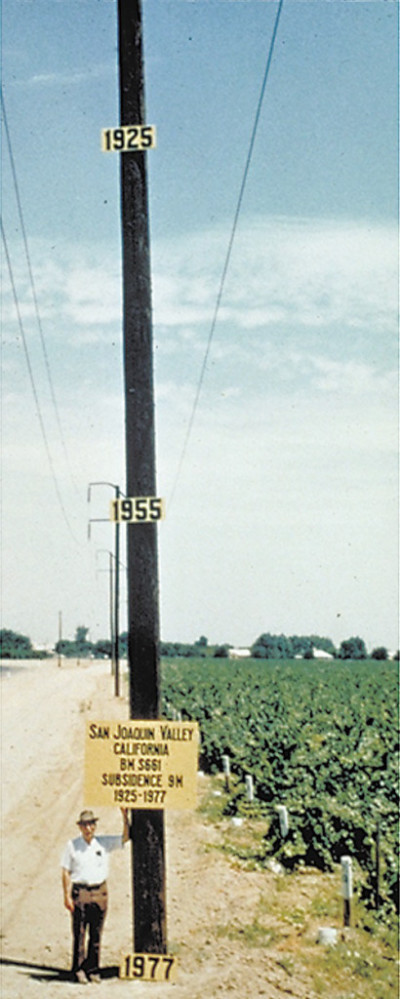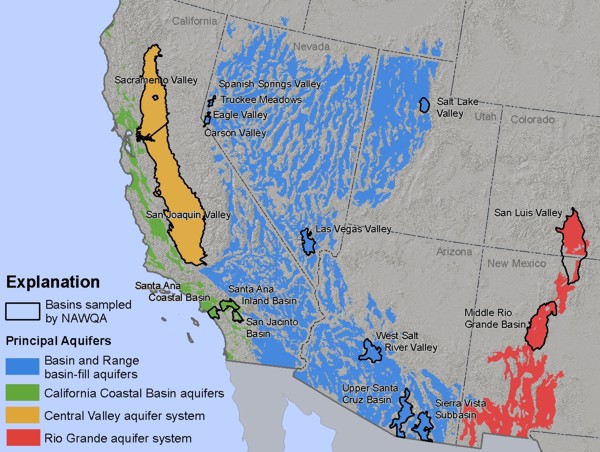Large stretches of California's Central Valley are sinking fast, and it's no mystery what the culprit is: water pumping.
Groundwater accounts for about 60 percent of the state's water supply in dry years, with most of that used by agriculture, according to the state Department of Water Resources.

As California's historic drought drags on and surface water supplies (from rain and snowpack) continue to dry up, farmers are drilling ever-deeper wells to pump up the dwindling supplies of subterranean water. But when too much water is extracted, the land quickly begins to subside.
A recent investigation by CIR's Reveal project calculated that the tens of thousands of groundwater pumps, mostly in the Central Valley, running around the clock, use up roughly 5 percent of the state's total electricity, or "enough to power every home in San Francisco for three years."
Since settlers first started pumping water here more than a century ago, groundwater use in California has been largely unregulated and unmonitored, leaving landowners free to pump as much as they've wanted. And the state's first ever groundwater regulations, enacted last year, won't go into effect for decades.
